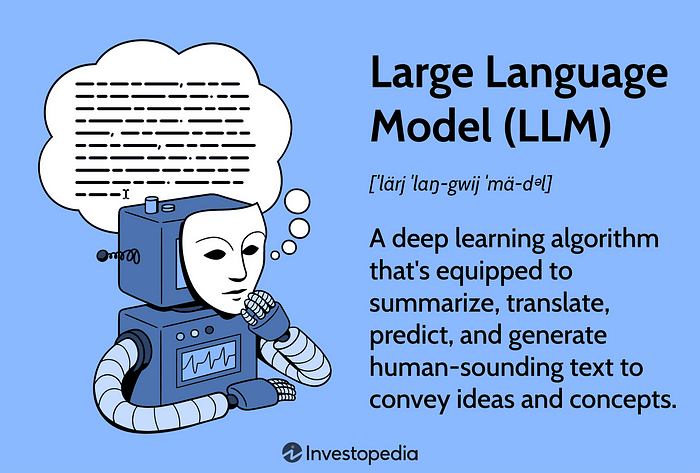What is Multi-Agent LLM?
Introduction
In the evolving landscape of artificial intelligence (AI), Multi-Agent Large Language Models (Multi-Agent LLMs) are emerging as a powerful force. They go beyond the capabilities of traditional AI models by enabling multiple agents to work collaboratively and communicate with each other to solve complex tasks. This article will walk you through the basics of Multi-Agent LLMs, their significance, and the innovations they bring to the table.
What is a Multi-Agent LLM?
Multi-Agent LLMs refer to an advanced AI architecture where multiple language models (agents) work together within a framework. Each agent in the system is typically designed to focus on a specific aspect of a task. The collaboration between these agents allows them to complete complex tasks faster and more efficiently than a single model could. This approach can be applied in a wide range of applications, from problem-solving to real-time decision-making processes in industries like healthcare, finance, and robotics.
While traditional LLMs like OpenAI’s GPT or Google’s PaLM function as standalone models, Multi-Agent LLMs operate as a group of models that are capable of dividing tasks and sharing knowledge across agents. This results in improved performance, especially in dynamic environments requiring quick adaptations.
Key Concepts of Multi-Agent LLMs
Agents: Each agent in a Multi-Agent LLM system performs its own specialized function, working on a part of the problem independently.
Collaboration: Agents communicate with each other, exchanging information and insights to complete a task efficiently.
Autonomy and Coordination: While each agent can work autonomously, coordination ensures that the agents’ actions align towards a shared goal.
Scalability: Multi-Agent LLMs are inherently scalable, as more agents can be added to the system, increasing processing power and improving task completion speed.
Learning and Adaptation: These models learn from one another and improve over time, adapting to new data and conditions.

Applications of Multi-Agent LLMs
Healthcare: Multi-Agent LLMs can collaborate to analyze medical data, helping doctors make more informed decisions faster.
Finance: In financial markets, multiple agents can predict market trends, provide risk assessments, and automate trading decisions.
Customer Service: These models can power intelligent chatbots that work together to handle customer inquiries, ensuring a faster, more personalized experience.
Robotics: In autonomous systems, Multi-Agent LLMs enable robots to coordinate with each other, improving tasks like warehouse management or assembly lines.

Why are Multi-Agent LLMs Important?
The world is moving towards more interconnected and data-driven decision-making processes. Multi-Agent LLMs are key to accelerating the development of AI systems capable of handling complex, real-time tasks. Their ability to divide tasks, learn collaboratively, and adjust to new environments makes them highly effective in various industries.
At fxis.ai, we are pioneering the integration of Multi-Agent LLMs to unlock new possibilities for businesses. By employing this technology, we help businesses across sectors leverage AI for better efficiency, faster insights, and higher scalability.

FAQs about Multi-Agent LLMs
What is the difference between a Multi-Agent LLM and a traditional LLM? Traditional LLMs process tasks in isolation, whereas Multi-Agent LLMs enable several agents to collaborate and divide tasks. This allows them to solve complex problems more efficiently.
How do Multi-Agent LLMs work together? Each agent works on a sub-task and shares insights with others, ensuring the system works in coordination towards a common goal. Communication between agents is essential for effective problem-solving.
Can Multi-Agent LLMs replace human decision-making? While Multi-Agent LLMs can assist in data analysis and automate certain tasks, they are not yet at the level of fully replacing human decision-making. However, they can significantly augment human capabilities in complex processes.
What industries benefit the most from Multi-Agent LLMs? Industries like healthcare, finance, customer service, logistics, and robotics can benefit immensely from Multi-Agent LLMs by improving efficiency and scalability.
How can I integrate Multi-Agent LLMs into my business? You can integrate Multi-Agent LLMs into your business by partnering with AI service providers like fxis.ai, who offer customized solutions to suit your industry-specific needs.
Multi-Agent LLMs represent the next frontier in AI, where multiple language models collaborate to tackle complex tasks efficiently. By dividing tasks and learning from each other, these models bring improvements to industries like healthcare, finance, and robotics. This article explains the basics of Multi-Agent LLMs, their applications, and their importance in revolutionizing AI solutions for businesses.
